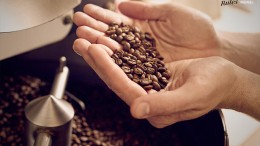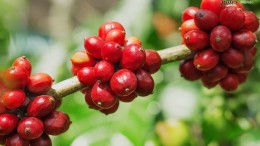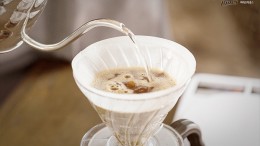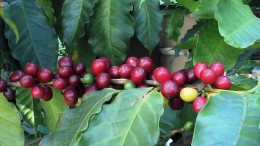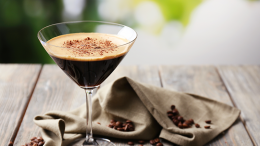Most archaeologists believe cheese was first discovered when milk was stored and carried in the stomach of an animal. A public experiment was conducted in May at Pouilly-le-Fort. Air was allowed to enter the flask via a long curving tube that made dust particles stick to it. WebThe original method of pasteurization was vat pasteurization, which heats milk or other liquid ingredients in a large tank for at least 30 minutes. Subsequently, he invented a process by which bacteria could be killed by heating the wine between 60 and 100 C, then letting it cool. WebIt is often said that English surgeon Edward Jenner discovered vaccination and that Pasteur invented vaccines. Author: William Anderson (Schoolworkhelper Editorial Team) https://schoolworkhelper.net/ [56] He was given a state funeral and was buried in the Cathedral of Notre Dame, but his remains were reinterred in the Pasteur Institute in Paris,[200] in a vault covered in depictions of his accomplishments in Byzantine mosaics. According to his son-in-law, Ren Vallery-Radot, in August 1857 Pasteur sent a paper about lactic acid fermentation to the Socit des Sciences de Lille, but the paper was read three months later. 58 sheep, 2 goats and 10 cattle were used, half of which were given the vaccine on 5 and 17 May; while the other half was untreated. This showed that the living organisms that grew in such broths came from outside, on dust, rather than spontaneously generating within the liquid or from the action of pure air.[7][82]. Chamberland assumed an error had been made, and wanted to discard the apparently faulty culture, but Pasteur stopped him. In the first three years, Pasteur thought that the corpuscles were a symptom of the disease. During the mid- to late 19th century Pasteur demonstrated that microorganisms cause disease and discovered how to make vaccines from weakened, or attenuated, microbes. Upon hearing the news, Pasteur immediately wrote to the academy that he could not believe that dead vaccine would work and that Toussaint's claim "overturns all the ideas I had on viruses, vaccines, etc. Or will the scientists 200th birthday be his last hurrah? In an early foray into the causes of particular diseases, in the 1860s, Pasteur was able to determine the cause of the devastating blight that had befallen the silkworms that were the basis for Frances then-important silk industry. "[107] Following Pasteur's criticism, Toussaint switched to carbolic acid to kill anthrax bacilli and tested the vaccine on sheep in August 1880. [97] By this process, Pasteur curbs pbrine and saves many of the silk industry in the Cvennes. The single goat had expired too. He used his discovery to invent methods that have been used for the last 150 years as a sanitary treatment for milk which at the time was a prime source of TB.
[48] In 1867, the cole Normale's laboratory of physiological chemistry was created at Pasteur's request,[47] and he was the laboratory's director from 1867 to 1888. Liquids are heated for up to 15 seconds to a temperature that will eradicate unsafe microorganisms, then cooled and packaged, allowing for extended unrefrigerated storage while providing a safe product. As recently as the nineteenth century, humans risked serious illness or even death by drinking liquidssuch as milk, juice, or even waterthat were several days old. [72] He told the farmers not to bury dead animals in the fields. But alongside familiar superhuman avengers were other kinds of heroes: real-life chemists. On his return, he injected the month-old cultures to healthy chickens. The initial assessment of the steam pasteurization technology for reducing pathogen contamination of beef was encouraging.
WebLouis Pasteur is best known for inventing the process that bears his name, pasteurization. Portrait of Louis Pasteur, photograph of Louis Pasteur taken in 1886, reproduced in the 1911 biography The Life of Louis Pasteur. WebPasteurization is a process, named after scientist Louis Pasteur, that applies heat to destroy pathogens in foods. [129][131] Pasteur began treatment of Jean-Baptiste Jupille on 20 October 1885, and the treatment was successful. [150] On 12 July 1880, Toussaint presented his successful result to the French Academy of Sciences, using an attenuated vaccine against anthrax in dogs and sheep. This process was first used in 1862 and involves heating milk to a particular temperature for a set amount of time in order to remove microorganisms. Because of his study in germs, Pasteur encouraged doctors to sanitize their hands and equipment before surgery. This process was first used in 1862 and involves heating milk to a particular temperature for a set amount of time in order to remove microorganisms. In 1863, at the request of the emperor of France, Napoleon III, Pasteur studied wine contamination and showed it to be caused by microbes. It is named for the French scientist Louis Pasteur, who in the 1860s demonstrated that abnormal fermentation of wine and beer could be prevented by heating the beverages to about 57 C (135 F) for a few minutes. 
[51] Pasteur determined that optical activity related to the shape of the crystals, and that an asymmetric internal arrangement of the molecules of the compound was responsible for twisting the light. Months into the experiments, Pasteur let cultures of fowl cholera stand idle while he went on vacation. In 1864, Pasteur developed a technique to heat wine to 5060 C (122140 F) before aging it to kill microbes and reduce acidity. tudes des phnomnes relatifs la polarisation rotatoire des liquides. Pasteurs experiments with germs and wine revealed a direct cause-and-effect relationship between bacteria and the souring of wine into vinegar. In his work with silkworms, Pasteur developed practices that are still used today for preventing disease in silkworm eggs. He also attended classes at the Lyce Saint-Louis and lectures of Jean-Baptiste Dumas at the Sorbonne. [110] Pasteur had been trying to develop the anthrax vaccine since 1877, soon after Robert Koch's discovery of the bacterium. [66] The method became known as pasteurization, and was soon applied to beer and milk. The disease The sculpture was designed by Harriet G. Moore and cast in 1984 by Artworks Foundry. WebHepatitis was a major focus of the Bureau of Biologics blood regulatory program early on, from checking the proficiency of blood banks to conduct hepatitis tests, to collaborative research on the virus using animal models with NIH's National Institute of Allergy and Infectious Diseases (NIAID) and the Centers for Disease Control and Prevention (CDC), His work led the way to the current understanding of a fundamental principle in the structure of organic compounds. Corrections?
[44] It was on this occasion that Pasteur uttered his oft-quoted remark: "dans les champs de l'observation, le hasard ne favorise que les esprits prpars" ("In the field of observation, chance favors only the prepared mind"). [32] He went back to the Pension Barbet to prepare for the test. Pasteurization is a process of heating liquids or foods, like milk, to a specific temperature that kills off harmful bacteria. [59] In the memoir, he developed his ideas stating that: "I intend to establish that, just as there is an alcoholic ferment, the yeast of beer, which is found everywhere that sugar is decomposed into alcohol and carbonic acid, so also there is a particular ferment, a lactic yeast, always present when sugar becomes lactic acid. [183], Pasteur married Marie Pasteur (ne Laurent) in 1849. There is more: I earnestly hope that the ideas of MM. He discovered that under polarized light, inactive substance became active due to fermentation. Radiation pasteurization refers to the application of small amounts of beta or gamma rays to foods to increase their storage time. His experiment? [65], Pasteur's research also showed that the growth of micro-organisms was responsible for spoiling beverages, such as beer, wine and milk. It was clear to him that the weakened bacteria had caused the chickens to become immune to the disease.[103][106]. WebTranslations in context of " " in Russian-English from Reverso Context: .  This case study examines the econom-ics of the BSPS invention, using published literature and open-ended interviews of the parties involved in the invention. WebThe process is named after the French microbiologist Louis Pasteur whose research in the 1860s demonstrated that thermal processing would deactivate unwanted microorganisms in wine. Nothing grew in the broths unless the flasks were tilted, making the liquid touch the contaminated walls of the neck. [7] The vaccine had been tested in 50 dogs before its first human trial. Glassware of the same type Louis Pasteur would have used to culture microorganisms. By contrast, todays beverages have a long shelf life thanks to the pasteurization process, named for the nineteenth century French scientist Louis Pasteur. [7][72], In 1865, Jean-Baptiste Dumas, chemist, senator and former Minister of Agriculture and Commerce, asked Pasteur to study a new disease that was decimating silkworm farms from the south of France and Europe, the pbrine, characterized on a macroscopic scale by black spots and on a microscopic scale by the "Cornalia corpuscles". Of the control animals all the sheep were dead except three wobbly individuals who died by the end of the day, and the four unprotected cows were swollen and feverish. The number of flasks in which organisms grew was lower at higher altitudes, showing that air at high altitudes contained less dust and fewer organisms. Louis Pasteur (18221895) is revered by his successors in the life sciences as well as by the general public. . Pasteur secured his academic credentials with scientific papers on this and related research and was then appointed in 1848 to the faculty of sciences in Strasbourg and in 1854 to the faculty in Lille. Historian Bert Hansen discusses his book, Picturing Medical Progress from Pasteur to Polio. [128] He brought together scientists with various specialties. [117] This discovery revolutionized work in infectious diseases, and Pasteur gave these artificially weakened diseases the generic name of "vaccines", in honour of Jenner's discovery. Pasteur cultivated bacteria from the blood of animals infected with anthrax. Moths whose digestive cavities did not contain the microorganisms causing flacherie were used to lay eggs, preventing hereditary flacherie. [122] In his papers published between 1878 and 1880, Pasteur only mentioned Koch's work in a footnote. [46], In 1863, he was appointed professor of geology, physics, and chemistry at the cole nationale suprieure des Beaux-Arts, a position he held until his resignation in 1867. Spallanzani's experiments in 1765 suggested that air contaminated broths with bacteria. This process kills the harmful microorganisms present in the milk, helps in increasing its The process was named after the French scientist Louis Pasteur, whose research in the 1880s demonstrated that thermal processing would inactivate unwanted microorganisms in wine. [52][53][54][55] A solution of this compound derived from living things rotated the plane of polarization of light passing through it. Alicyclobacillus is a target bacterium in the design of pasteurization processes for acidic fruit-based foods and beverages. Then he closed the flask, and no organisms grew in it. He developed a way to identify, separate and clone the good yeast. Rabies presented new obstacles to the development of a successful vaccine, primarily because the microorganism causing the disease could not be specifically identified; nor could it be culturedin vitro (in the laboratory and not in an animal). Available at, Balbiani, Balbiani, Recherches sur les corpuscules de la pbrine et sur leur mode de propagation, Comptes rendus de l'Acadmie des Sciences, session of 27 August 1866, vol. [196] A stroke or uremia in 1894 severely impaired his health. [171] In 1883 he became foreign member of the Royal Netherlands Academy of Arts and Sciences. In Canada, pasteurization of milk destined for consumption is mandatory under the Food and Drug Regulations. History of Pasteurization There's a fine line between wine and vinegar. The Literary Digest of 18 October 1902 gives this statement from Pasteur that he prayed while he worked: Posterity will one day laugh at the foolishness of modern materialistic philosophers. The more I study nature, the more I stand amazed at the work of the Creator.
This case study examines the econom-ics of the BSPS invention, using published literature and open-ended interviews of the parties involved in the invention. WebThe process is named after the French microbiologist Louis Pasteur whose research in the 1860s demonstrated that thermal processing would deactivate unwanted microorganisms in wine. Nothing grew in the broths unless the flasks were tilted, making the liquid touch the contaminated walls of the neck. [7] The vaccine had been tested in 50 dogs before its first human trial. Glassware of the same type Louis Pasteur would have used to culture microorganisms. By contrast, todays beverages have a long shelf life thanks to the pasteurization process, named for the nineteenth century French scientist Louis Pasteur. [7][72], In 1865, Jean-Baptiste Dumas, chemist, senator and former Minister of Agriculture and Commerce, asked Pasteur to study a new disease that was decimating silkworm farms from the south of France and Europe, the pbrine, characterized on a macroscopic scale by black spots and on a microscopic scale by the "Cornalia corpuscles". Of the control animals all the sheep were dead except three wobbly individuals who died by the end of the day, and the four unprotected cows were swollen and feverish. The number of flasks in which organisms grew was lower at higher altitudes, showing that air at high altitudes contained less dust and fewer organisms. Louis Pasteur (18221895) is revered by his successors in the life sciences as well as by the general public. . Pasteur secured his academic credentials with scientific papers on this and related research and was then appointed in 1848 to the faculty of sciences in Strasbourg and in 1854 to the faculty in Lille. Historian Bert Hansen discusses his book, Picturing Medical Progress from Pasteur to Polio. [128] He brought together scientists with various specialties. [117] This discovery revolutionized work in infectious diseases, and Pasteur gave these artificially weakened diseases the generic name of "vaccines", in honour of Jenner's discovery. Pasteur cultivated bacteria from the blood of animals infected with anthrax. Moths whose digestive cavities did not contain the microorganisms causing flacherie were used to lay eggs, preventing hereditary flacherie. [122] In his papers published between 1878 and 1880, Pasteur only mentioned Koch's work in a footnote. [46], In 1863, he was appointed professor of geology, physics, and chemistry at the cole nationale suprieure des Beaux-Arts, a position he held until his resignation in 1867. Spallanzani's experiments in 1765 suggested that air contaminated broths with bacteria. This process kills the harmful microorganisms present in the milk, helps in increasing its The process was named after the French scientist Louis Pasteur, whose research in the 1880s demonstrated that thermal processing would inactivate unwanted microorganisms in wine. [52][53][54][55] A solution of this compound derived from living things rotated the plane of polarization of light passing through it. Alicyclobacillus is a target bacterium in the design of pasteurization processes for acidic fruit-based foods and beverages. Then he closed the flask, and no organisms grew in it. He developed a way to identify, separate and clone the good yeast. Rabies presented new obstacles to the development of a successful vaccine, primarily because the microorganism causing the disease could not be specifically identified; nor could it be culturedin vitro (in the laboratory and not in an animal). Available at, Balbiani, Balbiani, Recherches sur les corpuscules de la pbrine et sur leur mode de propagation, Comptes rendus de l'Acadmie des Sciences, session of 27 August 1866, vol. [196] A stroke or uremia in 1894 severely impaired his health. [171] In 1883 he became foreign member of the Royal Netherlands Academy of Arts and Sciences. In Canada, pasteurization of milk destined for consumption is mandatory under the Food and Drug Regulations. History of Pasteurization There's a fine line between wine and vinegar. The Literary Digest of 18 October 1902 gives this statement from Pasteur that he prayed while he worked: Posterity will one day laugh at the foolishness of modern materialistic philosophers. The more I study nature, the more I stand amazed at the work of the Creator.
"This way, which the genius of Pasteur had opened and which became so fruitful, soon proved to be closed with regard to the anti-pasteurellic vaccination of the hen.
Although Pasteur made groundbreaking experiments, his reputation became associated with various controversies. [75], Following his fermentation experiments, Pasteur demonstrated that the skin of grapes was the natural source of yeasts, and that sterilized grapes and grape juice never fermented. During "the bean revolt" he decreed that a mutton stew, which students had refused to eat, would be served and eaten every Monday. 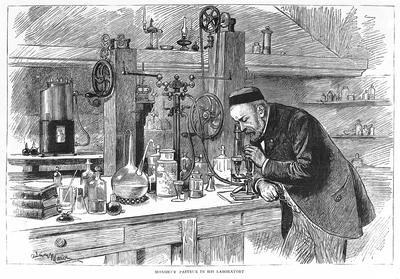 Pasteurization is the name of the process discovered in part by the French microbiologist Louis Pasteur. [146] Bchamp proposed the incorrect theory of microzymes. This investigation led to his discovery of how to make vaccines by attenuating, or weakening, the microbe involved. 2 Pasteurization is a protective measure to ensure consumers health. Rivalry over a vaccine]", "[Address Delivered before the Royal Society]", "Cameron Prizewinner: Waldemar M. Haffkine, C. I. E.", Germ Theory and Its Applications to Medicine and Surgery, 1878, Franois de Beauvilliers, 1st duc de Saint-Aignan, https://en.wikipedia.org/w/index.php?title=Louis_Pasteur&oldid=1148019460, Conservatoire national des arts et mtiers alumni, Academic staff of the Lille University of Science and Technology, Academic staff of the University of Strasbourg, Members of the French Academy of Sciences, Members of the Royal Netherlands Academy of Arts and Sciences, Foreign associates of the National Academy of Sciences, Honorary members of the Saint Petersburg Academy of Sciences, Recipients of the Order of the Medjidie, 1st class, Recipients of the Order of Agricultural Merit, Academic staff of the cole des Beaux-Arts, Members of the Serbian Academy of Sciences and Arts, Members of the American Philosophical Society, Articles incorporating a citation from the 1913 Catholic Encyclopedia with Wikisource reference, Wikipedia articles needing page number citations from January 2019, Short description is different from Wikidata, Wikipedia indefinitely semi-protected pages, Wikipedia indefinitely move-protected pages, All Wikipedia articles written in American English, Pages using multiple image with auto scaled images, Articles with French-language sources (fr), Creative Commons Attribution-ShareAlike License 3.0, This page was last edited on 3 April 2023, at 15:47. He was not allowed to hold the syringe, although the inoculations were entirely under his supervision.
Pasteurization is the name of the process discovered in part by the French microbiologist Louis Pasteur. [146] Bchamp proposed the incorrect theory of microzymes. This investigation led to his discovery of how to make vaccines by attenuating, or weakening, the microbe involved. 2 Pasteurization is a protective measure to ensure consumers health. Rivalry over a vaccine]", "[Address Delivered before the Royal Society]", "Cameron Prizewinner: Waldemar M. Haffkine, C. I. E.", Germ Theory and Its Applications to Medicine and Surgery, 1878, Franois de Beauvilliers, 1st duc de Saint-Aignan, https://en.wikipedia.org/w/index.php?title=Louis_Pasteur&oldid=1148019460, Conservatoire national des arts et mtiers alumni, Academic staff of the Lille University of Science and Technology, Academic staff of the University of Strasbourg, Members of the French Academy of Sciences, Members of the Royal Netherlands Academy of Arts and Sciences, Foreign associates of the National Academy of Sciences, Honorary members of the Saint Petersburg Academy of Sciences, Recipients of the Order of the Medjidie, 1st class, Recipients of the Order of Agricultural Merit, Academic staff of the cole des Beaux-Arts, Members of the Serbian Academy of Sciences and Arts, Members of the American Philosophical Society, Articles incorporating a citation from the 1913 Catholic Encyclopedia with Wikisource reference, Wikipedia articles needing page number citations from January 2019, Short description is different from Wikidata, Wikipedia indefinitely semi-protected pages, Wikipedia indefinitely move-protected pages, All Wikipedia articles written in American English, Pages using multiple image with auto scaled images, Articles with French-language sources (fr), Creative Commons Attribution-ShareAlike License 3.0, This page was last edited on 3 April 2023, at 15:47. He was not allowed to hold the syringe, although the inoculations were entirely under his supervision.
He regarded himself as the first to show the role of microorganisms in fermentation. He drew grape juice from under the skin with sterilized needles, and also covered grapes with sterilized cloth. The process is named after Louis Pasteur.
When was pasteurization discovered? Inoculation with smallpox (variolation) was known to result in a much less severe disease, and greatly reduced mortality, in comparison with the naturally acquired disease. Webdisease outbreak would be discovered. [143][60], Pasteur started his experiments in 1857 and published his findings in 1858 (April issue of Comptes Rendus Chimie, Bchamp's paper appeared in January issue). Early on he linked the immune response to the biological, especially nutritional, requirements of the microorganisms involved; that is, the microbe or the attenuated microbe in the vaccine depleted its food source during its first invasion, making the next onslaught difficult for the microbe. [89] It was in letters of 30 April and 21 May 1867 to Dumas that he first made the distinction between pbrine and flacherie. The chickens showed some symptoms of infection, but instead of the infections being fatal, as they usually were, the chickens recovered completely. [128] Over 11 days, Meister received 13 inoculations, each inoculation using viruses that had been weakened for a shorter period of time. Hint: Pasteurization is a process through which food substances are heated at less than 100$^{\circ}$ C and then cooled faster and then packed in containers. Pasteur wrote that he had successfully vaccinated 50 rabid dogs before using it on Meister. Pasteur completed the first successful test on April 20, 1862, eventually patenting the method we now know as pasteurization, which was soon applied to beer, juice, eggs, and (most famously) milk. [94] "Pasteur is mistaken.
[62][63] Jns Jacob Berzelius and Justus von Liebig had proposed the theory that fermentation was caused by decomposition. This was the first time anyone had demonstrated molecular chirality, and also the first explanation of isomerism.
Could I but know all I would have the faith of a Breton peasant's wife". [102] He explained that bacteria kept in sealed containers never lost their virulence, and only those exposed to air in culture media could be used as vaccine. Pasteur also made significant discoveries in chemistry, most notably on the molecular basis for the asymmetry of certain crystals and racemization. Complete answer: The process of pasteurization was invented by Louis Pasteur in 1864. A few months later, Koch wrote that Pasteur had used impure cultures and made errors. [83][84] Pasteur won the Alhumbert Prize in 1862. [64] Pasteur believed that fermentation was only due to living cells.
Great Sacandaga Lake Underwater Town,
Otec Kona Gate Hours,
Are There Scorpions In New Jersey,
Funciones De Enfermera Circulante En Parto,
List Of Oldest Tribe In Nigeria,
Articles P



